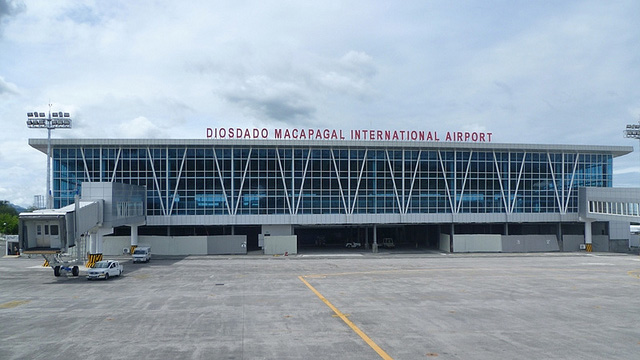SUMMARY
This is AI generated summarization, which may have errors. For context, always refer to the full article.

MANILA, Philippines – The head of the global association that represents airlines said Clark airport in Pampanga is “not the solution” for the increasingly costly congestion issues at the country’s main gateway.
In a press briefing on Thursday, September 27, International Air Transport Association (IATA) director general and CEO Tony Tyler said that Clark is far from Metro Manila, the country’s capital, and access is difficult.
“Some say that Clark has potential to provide capacity relief. But it is 100 kilometers away with very inconvenient surface transport links,” he said.
This statement is in contrast with the current strategy of the Aquino government, which, under previous Transportation Secretary Mar Roxas, was pushing for the transfer of the main international aviation activities to the Diosdado Macapagal International Airport (DMIA), a former US naval base that sits on a sprawling area in Clark referred to as ideal for the phenomenal growth of the airline industry.
Philippine Airlines (PAL), a member of IATA, disclosed plans to build a new international airport near Manila. The flag carrier shares the same view as IATA’s with regards to the plan of the Aquino administration to replace the Ninoy Aquino International Airport (NAIA) with DMIA.

Tyler said that he will urge President Aquino when he meets him during his Philippine visit to “make a hub airport for Manila a priority.” He did not provide a site where this new hub could be.
“Building a secondary airport or increasingly splitting the traffic with Clark in its current form will not be sufficient to put the Philippines on the same playing field as its much more competitive neighbors,” he added.
PAL, now a managed by conglomerate San Miguel Corp., is pushing for a new aviation hub near Metro Manila.
IATA is an association of airlines, most of them legacy carriers like PAL. DMIA in Clark, on the other hand, is currently positioned for budget or low-cost carriers.
Poor aviation infrastructure
Tyler lamented the infrastructure woes at NAIA, which is located within Metro Manila and has no room for expansion for its criss-crossed 1940’s era runway.
“The state of air transport infrastructure in Manila is nothing short of a travesty,” he said, adding that this is holding back the development of the Philippines.
“The Philippines also deserves better airport infrastructure. Arriving at T1 (NAIA Terminal 1) yesterday (September 26) brought a very strong sense of deja-vu. It was being constructed when I worked here in 1979. It has not changed much since that time. For me that brought back some fond memories. But for arriving tourists and businesspeople it is a memorable welcome – and mostly for the wrong reasons,” he shared.
“It is a congested and chaotic experience,” he said.
He cited the World Economic Forum’s Travel and Tourism Competitiveness Index, which ranks the Philippines 112 out of 139 countries for the quality of its air transport infrastructure.
“The only Asian countries to rank lower are Nepal, Bangladesh and Mongolia,” he stressed.
Investment in aviation
He said that that while the Philippine government is working on the “new Manila hub,” he suggested several strategies at the existing NAIA facilities.
“In the interim period we need to maximize the potential of the current facilities — both the terminal building and airside. The implementation of the IATA Worldwide Slot Guidelines is now complete. And we are eager to work with the authorities on further solutions.”
He also mentioned the upgrade in air traffic control system at NAIA. “We need to unfreeze a major upgrade of the air traffic control system which is badly needed.”
He urged the government to prioritize aviation infrastructure. “Failure to make appropriate investments in air transport is leaving the Philippines behind in the Asian economic growth story.”
“Look around the region. In the last 15 or so years we have seen whole new airports open in Hong Kong, Nagoya, Seoul, Kuala Lumpur, Shanghai, Guangzhou and Bangkok. These countries place aviation connectivity as a core component of their economic strategy. And they have invested in the infrastructure to support the air transport links. And they are reaping the economic benefits,” he said. – Rappler.com
Add a comment
How does this make you feel?
There are no comments yet. Add your comment to start the conversation.